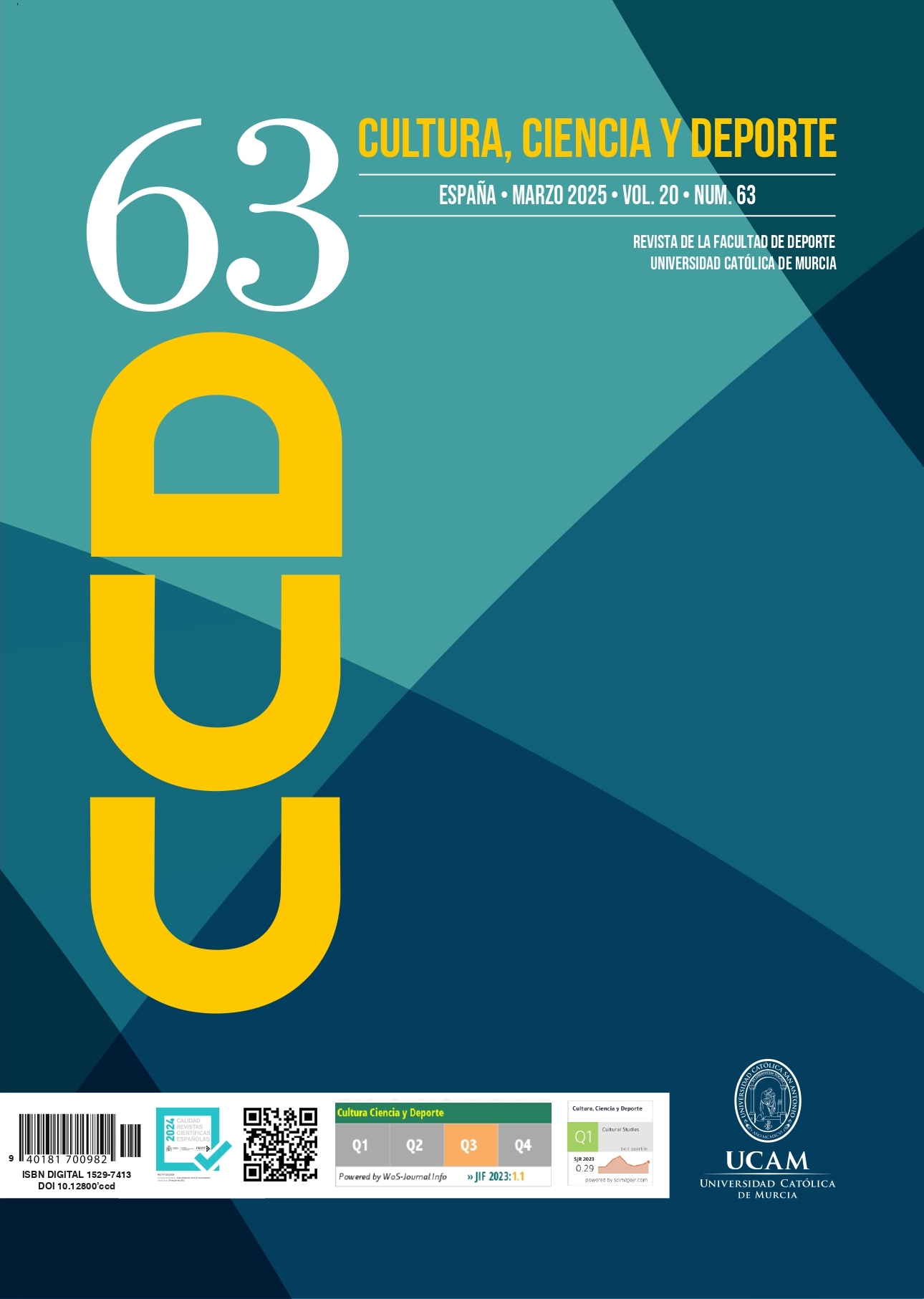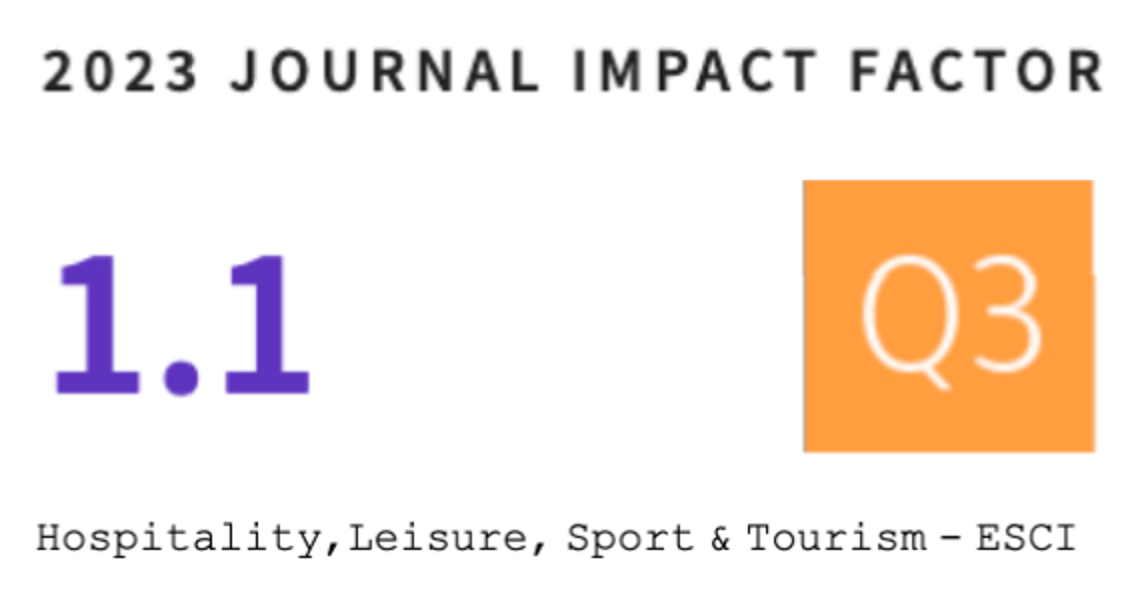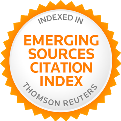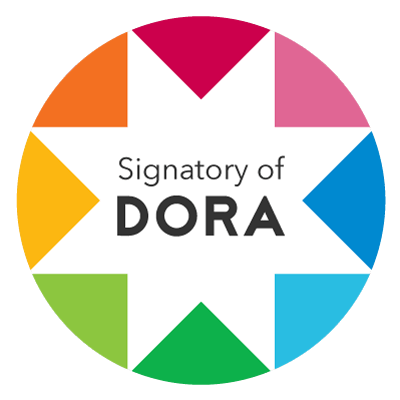A Systematic Literature Review of Blockchain Technology and the Sports Industry
DOI:
https://doi.org/10.12800/ccd.v20i63.2208Abstract
This study provides a comprehensive overview of blockchain applications in the sports industry through a systematic literature review (SLR) following PRISMA guidelines. The terms “Blockchain AND Sport” were used to search across databases such as Web of Science, Scopus, ScienceDirect, PubMed, Embase, IEEE, and Dimensions. After the search, 1,571 articles were identified, with 37 primary studies selected for detailed analysis. The review highlights blockchain’s potential to transform the management and operation of sports-related activities by addressing challenges faced by stakeholders. The results demonstrated that blockchain enhances stakeholder trust through transparency, decentralization, and immutability. Its ability to automate processes like player transfers and contract management via smart contracts reduces
costs and risks, while fan engagement is bolstered through digital tokens and NFTs. The findings underscore blockchain’s capacity to revolutionize sports management through digital collectibles, secure transactions, performance optimization, and fan engagement through exclusive digital content. However, significant challenges still need to be addressed, including regulatory uncertainty, technical complexity, high implementation costs, and cultural resistance to decentralization. Despite these obstacles, blockchain presents substantial opportunities for innovation and efficiency in the sports industry. The review concludes that continued technological advancements, regulatory development, and cultural adaptation are
essential for the widespread adoption of blockchain in sports.
References
Abdelmaboud, A., Ahmed, A. I. A., Abaker, M., Eisa, T. A. E., Albasheer, H., Ghorashi, S. A., & Karim, F. K. (2022). Blockchain for IoT Applications: Taxonomy, Platforms, Recent Advances, Challenges and Future Research Directions. Electronics, 11(4), 630. https://doi.org/10.3390/electronics11040630
Alaminos, D., Salas, M. B., & Fernández-Gámez, M. Á. (2024). Hybrid genetic algorithms in agent-based artificial market model for simulating fan tokens trading. Engineering Applications of Artificial Intelligence, 131, 107713. https://doi.org/10.1016/j.engappai.2023.107713
Al-Rakhami, M. S., & Al-Mashari, M. (2021). A Blockchain-Based Trust Model for the Internet of Things Supply Chain Management. Sensors, 21(5), 1759. https://doi.org/10.3390/s21051759
Andrew, J., Isravel, D., Sagayam, K., Bhushan, B., Sei, Y., & Eunice, J. (2023). Blockchain for healthcare systems: Architecture, security challenges, trends and future directions. Journal of Network and Computer Applications, 215. https://doi.org/10.1016/j.jnca.2023.103633
Ante, L., Schellinger, B. & Demir, E. (2024). The impact of football games and sporting performance on intra-day fan token returns. J Bus Econ, 94, 813–850. https://doi.org/10.1007/s11573-023-01187-z
Antonopoulos, A. M. (2017). Mastering Bitcoin. O’Reilly Media.
Arif, Y. M., Putra, D. D., Wardani, D., Nugroho, S. M. S., & Hariadi, M. (2023). Decentralized recommender system for ambient
intelligence of tourism destinations serious game using known and unknown rating approach. Heliyon, 9(3), e14267. https://doi.org/10.1016/j.heliyon.2023.e14267
Baker, B., Pizzo, A., & Su, Y. (2022). Non-Fungible Tokens: A Research Primer and Implications for Sport Management. Sports Innovation Journal, 3, 1–15. https://doi.org/10.18060/25636
Bashir, I. (2020). Mastering Blockchain: A deep dive into distributed ledgers, consensus protocols, smart contracts, DApps, cryptocurrencies, Ethereum, and more (3rd Edition). Packt Publishing. https://www.packtpub.com/en-th/product/mastering-blockchain-9781839213199
Bucea-Manea-Tonis, R., Martins, O., Bucea-Manea-Tonis, R., Gheorghita, C., Kuleto, V., Ilic, M., & Simion, V. (2021). Blockchain Technology Enhances Sustainable Higher Education. Sustainability, 13(22). https://doi.org/10.3390/su132212347
Bürer, M. J., de Lapparent, M., Pallotta, V., Capezzali, M., & Carpita, M. (2019). Use cases for Blockchain in the Energy Industry Opportunities of emerging business models and related risks. Computers & Industrial Engineering, 137, 106002. https://doi.org/10.1016/j.cie.2019.106002
Canales, C. B., & Sanz Valero, J. (2020). Indicadores de Impacto y Prestigio de las Revistas de Ciencias de la Salud indizadas en la Red Scielo: Estudio Comparativo. Revista Española de Salud Pública, 94(9). https://ojs.sanidad.gob.es/index.php/resp/article/view/805
Cao, P., Zhu, G., Zhang, Q., Wang, F., Liu, Y., & Mo, R. (2021). Blockchain-Enabled HMM Model for Sports Performance Prediction. IEEE Access, 9, 40255–40262. https://doi.org/10.1109/access.2021.3064261
Carlsson-Wall, M., & Newland, B. (2020). Blockchain, Sport, and Navigating the Sportstech Dilemma. In 21st Century Sports (pub.1167438452; pp. 233–246). https://doi.org/10.1007/978-3-031-38981-8_14
Casino, F., Kanakaris, V., Dasaklis, T. K., Moschuris, S., Stachtiaris, S., Pagoni, M., & Rachaniotis, N. P. (2021). Blockchain- based food supply chain traceability: A case study in the dairy sector. International Journal of Production Research, 59(19), 5758–5770. https://doi.org/10.1080/00207543.2020.1789238
Chen, C.-L., Fang, C.-C., Zhou, M., Tsaur, W.-J., Sun, H., Zhan, W., & Deng, Y.-Y. (2022). A Blockchain-Based Anti-Counterfeit and Traceable NBA Digital Trading Card Management System. Symmetry, 14(9), 1827. https://doi.org/10.3390/sym14091827
Demir, E., Ersan, O., & Popesko, B. (2022). Are Fan Tokens Fan Tokens? Finance Research Letters, 47, 102736. https://doi.org/10.1016/j.frl.2022.102736
Deng, W., Huang, T., & Wang, H. (2022). A Review of the Key Technology in a Blockchain Building Decentralized Trust Platform. Mathematics, 11(1), 101. https://doi.org/10.3390/math11010101
Di Ciccio, C., Cecconi, A., Dumas, M., García-Bañuelos, L., López-Pintado, O., Lu, Q., Mendling, J., Ponomarev, A., Binh Tran, A., & Weber, I. (2019). Blockchain Support for Collaborative Business Processes. Informatik Spektrum, 42(3), 182–190. https://doi.org/10.1007/s00287-019-01178-x
Egghe, L., & Rousseau, R. (2008). An h-index weighted by citation impact. Information Processing & Management, 44(2), 770–780. https://doi.org/10.1016/j.ipm.2007.05.003
Ersan, O., Demir, E., & Assaf, A. (2022). Connectedness among fan tokens and stocks of football clubs. Research in International Business and Finance, 63, 101780. https://doi.org/10.1016/j.ribaf.2022.101780
Far, S., Rad, A. I., & Asaar, M. R. (2023). Blockchain and its derived technologies shape the future generation of digital businesses: A focus on decentralized finance and the Metaverse. Data Science and Management, 6(3), 183–197. https://doi.org/10.1016/j.dsm.2023.06.002
Foglia, M., Maci, G., & Pacelli, V. (2024). FinTech and fan tokens: Understanding the risks spillover of digital asset investment. Research in International Business and Finance, 68, 102190. https://doi.org/10.1016/j.ribaf.2023.102190
Franceschet, M., & Libera, D. D. (2023). Return on NFTs. Frontiers in Blockchain, 6, 1101939. https://doi.org/10.3389/fbloc.2023.1101939
Fukuzawa, M. B., McConnell, B. M., Kay, M. G., Thoney-Barletta, K. A., & Warsing, D. P. (2024). Implementing trades of the National Football League Draft on blockchain smart contracts. International Journal of Sports Marketing and Sponsorship, ahead-of-print(ahead-of-print). https://doi.org/10.1108/ijsms-09-2023-0185
Gökalp, E., Gökalp, M. O., & Çoban, S. (2022). Blockchain-Based Supply Chain Management: Understanding the Determinants of Adoption in the Context of Organizations. Information Systems Management, 39(2), 100–121. https://doi.org/10.1080/10580530.2020.1812014
Haque, Md. M., Kumer Paul, S., Paul, R. R., Ekramul Hamid, Md., Fahim, S., & Islam, S. (2022). A Comprehensive Study on Ethereum Blockchain-based Digital Marketplace using NFT Smart Contract Infrastructure. 2022 25th International Conference on Computer and Information Technology (ICCIT), 348–353. https://doi.org/10.1109/ICCIT57492.2022.10056108
Hong, Y., & Park, D.-W. (2020). Big data and Blockchain to improve performance of professional sports teams. ASM Science Journal, 13(Specialissue1), 19–27. https://www.akademisains.gov.my/asmsj/article/big-data-and-blockchain-to-improve-performance-of-professional-sports-teams/
Horta, V., Ströele, V., Braga, R., David, J. M. N., & Campos, F. (2018). Analyzing scientific context of researchers and communities by using complex network and semantic technologies. Future Generation Computer Systems, 89, 584–605. https://doi.org/10.1016/j.future.2018.07.012
Hu, C., Yang, F., Zu, X., & Huang, Z. (2021). H Index weighted by Eigenfactor of Citations for Journal Evaluation. In Contemporary Perspectives in Data Mining (Vol. 4). IAP.
Ivanov, N., Yan, Q., & Kompalli, A. (2023). TxT: Real-Time Transaction Encapsulation for Ethereum Smart Contracts. IEEE Transactions on Information Forensics and Security, 18, 1141–1155. https://doi.org/10.1109/TIFS.2023.3234895
Jiang, Y., Han, D., Cui, M., Fan, Y., & Zhou, Y. (2023). A Video Target Tracking and Correction Model with Blockchain and Robust Feature Location. Sensors, 23(5), 2408. https://doi.org/10.3390/s23052408
Jun-Ming, C., & Jing, P. (2021). Research on Copyright Protection of Sports Events Based on Blockchain Technology. 2021 International Conference on Information Technology and Contemporary Sports (TCS), 455–459. https://doi.org/10.1109/tcs52929.2021.00097
Karakaya, A., & Akleylek, S. (2021). A novel IoT-based health and tactical analysis model with fog computing. PeerJ Computer Science, 7, e342. https://doi.org/10.7717/peerj-cs.342
Khaund, S. (2020). Blockchain: From Fintech to the Future of Sport. In 21st Century Sports (pub.1167427582; pp. 219–231). https://doi.org/10.1007/978-3-031-38981-8_13
Kitchenham, B., & Brereton, P. (2013). A systematic review of systematic review process research in software engineering. Information and Software Technology, 55(12), 2049–2075. https://doi.org/10.1016/j.infsof.2013.07.010
Kitchenham, B., Charters, S., Budgen, D., Brereton, P., Turner, M., Linkman, S., Jørgensen, M., Mendes, E., & Visaggio, G. (2007). Guidelines for performing Systematic Literature Reviews in Software Engineering [Tech Report]. Keele University and
Durham University. https://legacyfileshare.elsevier.com/promis_misc/525444systematicreviewsguide.pdf
Li, N., & Zhu, X. (2023). Design and application of blockchain and IoT-enabled sports injury rehabilitation monitoring system using neural network. Soft Computing, 27(16), 11815–11832. https://doi.org/10.1007/s00500-023-08677-w
Li, Y., Kim, K., & Ding, Y. (2021). Research on Optimization of Blockchain Network and Data Communication in the Ecological Structure of Sports Industry. Wireless Communications and Mobile Computing, 2021, 1–11. https://doi.org/10.1155/2021/3523681
Liu, C., Li, Z., Liu, S., Xie, J., Yan, C., & Huang, W. (2021). Trusted Player Transfer Evaluation for Sport Markets Based on Blockchain and Locality-Sensitive Hashing. IEEE Access, 9, 87332–87339. https://doi.org/10.1109/access.2021.3089546
Liu, L., Zhou, S., Huang, H., & Zheng, Z. (2021). From Technology to Society: An Overview of Blockchain-Based DAO. IEEE Open Journal of the Computer Society, 2, 204–215. https://doi.org/10.1109/OJCS.2021.3072661
Liu, Y., Lu, Q., Zhu, L., Paik, H.-Y., & Staples, M. (2023). A systematic literature review on blockchain governance. Journal of Systems and Software, 197, 111576. https://doi.org/10.1016/j.jss.2022.111576
Lombardo, M. P. (2012). On the Evolution of Sport. Evolutionary Psychology, 10(1), 1–28. https://doi.org/10.1177/147470491201000101
Lv, C., Wang, Y., & Jin, C. (2022). The possibility of sports industry business model innovation based on blockchain technology: Evaluation of the innovation efficiency of listed sports companies. PLoS ONE, 17(1), e0262035. https://doi.org/10.1371/journal.pone.0262035
Ma, F. (2021). Design of running training assistance system based on blockchain technology in wireless network. EURASIP Journal on Wireless Communications and Networking, 2021(1), 18. https://doi.org/10.1186/s13638-021-01897-4
Mazur, M., & Vega, M. (2023). Football and Cryptocurrencies. The Journal of Alternative Investments, 24(4), 33-44.https://doi.org/10.3905/jai.2022.1.153
Mohammad, F., Al-Ahmadi, S., & Al-Muhtadi, J. (2023). Block-Deep: A Hybrid Secure Data Storage and Diagnosis Model for Bone Fracture Identification of Athlete From X-Ray and MRI Images. IEEE Access, 11, 142360–142370. https://doi.org/10.1109/access.2023.3330914
Nakamoto, S. (2008). Bitcoin: A Peer-to-Peer Electronic Cash System. 9.
Naraine, M. L. (2019). The Blockchain Phenomenon: Conceptualizing Decentralized Networks and the Value Proposition to the Sport Industry. International Journal of Sport Communication, 12(3), 313–335. https://doi.org/10.1123/ijsc.2019-0051
Nugraha, A., Daniel, D. R., & Utama, A. A. G. S. (2021). Improving multi-sport event ticketing accounting information systemdesign through implementing RFID and blockchain technologies within COVID-19 health protocols. Heliyon, 7(10),e08167. https://doi.org/10.1016/j.heliyon.2021.e08167
Ouzzani, M., Hammady, H., Fedorowicz, Z., & Elmagarmid, A. (2016). Rayyan—A web and mobile app for systematic reviews. Systematic Reviews, 5(1), 210. https://doi.org/10.1186/s13643-016-0384-4
Ozcan, S., & Unalan, S. (2022). Blockchain as a General-Purpose Technology: Patentometric Evidence of Science, Technologies, and Actors. IEEE Transactions on Engineering Management, 69(3), 792–809. https://doi.org/10.1109/TEM.2020.3008859
Page, M. J., Moher, D., Bossuyt, P. M., Boutron, I., Hoffmann, T. C., Mulrow, C. D., Shamseer, L., Tetzlaff, J. M., Akl, E. A., Brennan, S. E., Chou, R., Glanville, J., Grimshaw, J. M., Hróbjartsson, A., Lalu, M. M., Li, T., Loder, E. W., Mayo-Wilson, E., McDonald, S., … McKenzie, J. E. (2021). PRISMA 2020 explanation and elaboration: Updated guidance and exemplars forreporting systematic reviews. BMJ, 160. https://doi.org/10.1136/bmj.n160
Parham, A., & Breitinger, C. (2022). Non-fungible tokens: Promise or peril? arXiv [cs.CR]. https://doi.org/10.48550/ARXIV.2202.06354
Park, K. O. (2020). A Study on Sustainable Usage Intention of Blockchain in the Big Data Era: Logistics and Supply Chain Management Companies. Sustainability, 12(24), 10670. https://doi.org/10.3390/su122410670
Petersen, K., Vakkalanka, S., & Kuzniarz, L. (2015). Guidelines for conducting systematic mapping studies in software engineering: An update. Information and Software Technology, 64, 1–18. https://doi.org/10.1016/j.infsof.2015.03.007
Pinto, F., Rahulamathavan, Y., & Skinner, J. (2022). Blockchain for Doping Control Applications in Sports: A Conceptual Approach. Future Internet, 14(7), 210. https://doi.org/10.3390/fi14070210
Principe, V. A., De Souza Vale, R. G., De Castro, J. B. P., Carvano, L. M., Henriques, R. A. P., De Almeida E Sousa Lobo, V. J., & De Alkmim Moreira Nunes, R. (2022). A computational literature review of football performance analysis through probabilistic topic modeling. Artificial Intelligence Review, 55(2), 1351–1371. https://doi.org/10.1007/s10462-021-09998-8
Pu, C., Zhou, J., Sun, J., & Zhang, J. (2023). Football Player Injury Full-Cycle Management and Monitoring System Based on Blockchain and Machine Learning Algorithm. International Journal of Computational Intelligence Systems, 16(1), 41. https://doi.org/10.1007/s44196-023-00217-6
Pu, S., & Lam, J. S. L. (2021). Blockchain adoptions in the maritime industry: A conceptual framework. Maritime Policy & Management, 48(6), 777–794. https://doi.org/10.1080/03088839.2020.1825855
Ratten, V. (2019). Sports Technology and Innovation: Assessing Cultural and Social Factors. Springer International Publishing. https://doi.org/10.1007/978-3-319-75046-0
Raveh, A. (2020). Navigating the Web3 Landscape: A Forward-Looking Perspective on the Future of Sports Business for Athletes, Consumers, and Management. In 21st Century Sports (pub.1167428868; pp. 331–340). https://doi. org/10.1007/978-3-031-38981-8_21
Regner, F., Schweizer, A., & Urbach, N. (2019). NFTs in Practice – Non-Fungible Tokens as Core Component of a Blockchain- based Event Ticketing Application. CIS 2019 Proceedings, 17.
Sabarigirisan, R., Biswas, A., Rohatgi, R., Kc, S., & Shukla, S. (2021). Leveraging blockchain based decentralized apps for the Tokyo Olympics amid the COVID-19 pandemic: : A value-focused thinking based assessment and ideation. First Monday.https://doi.org/10.5210/fm.v26i8.11703
Sakız, B., & Gencer, A. H. (2021). Blockchain Beyond Cryptocurrency: Non-Fungible Tokens. International Conference on Eurasian Economies, 154–161. https://doi.org/10.36880/C13.02527
Sang, Y., & Wang, L. (2022). Physical fitness data monitoring of college students based on the internet of things and blockchain. Frontiers in Public Health, 10, 940451. https://doi.org/10.3389/fpubh.2022.940451
Sato, M. (2021). Fundamentals of Blockchains. In S. Matsuo & N. Sakimura (Eds.), Blockchain Gaps: From Myth to Real Life (pp.1–8). Springer. https://doi.org/10.1007/978-981-33-6052-5_1
Scharnowski, M., Scharnowski, S., & Zimmermann, L. (2023). Fan tokens: Sports and speculation on the blockchain. Journal of International Financial Markets, Institutions and Money, 89, 101880. https://doi.org/10.1016/j.intfin.2023.101880
Shan, Y., & Mai, Y. (2020). Research on Sports Fitness Management Based on Blockchain and Internet of Things. Research Square. https://doi.org/10.21203/rs.3.rs-37955/v1
Singh, V. K., Singh, P., Karmakar, M., Leta, J., & Mayr, P. (2021). The journal coverage of Web of Science, Scopus and Dimensions: A comparative analysis. Scientometrics, 126(6), 5113–5142. https://doi.org/10.1007/s11192-021-03948-5
Solntsev, I., Alekseeva, A., & Susov, Y. (2022). New Financial Tools in Sport: NFTs and Fan Tokens. Journal of Corporate Finance Research / Корпоративные Финансы, 16(2), 107–119. https://doi.org/10.17323/j.jcfr.2073-0438.16.2.2022.107-119
Song, B., & Tuo, P. (2022). Monitoring the Physical Condition of Basketball Players using IoT and Blockchain. Mobile Information Systems, 2022, 1–11. https://doi.org/10.1155/2022/7657764
Tranfield, D., Denyer, D., & Smart, P. (2003). Towards a Methodology for Developing Evidence‐Informed Management Knowledge by Means of Systematic Review. British Journal of Management, 14(3), 207–222. https://doi.org/10.1111/1467-8551.00375
Vairavan, M., Prayle, A., & Davies, P. (2020). You are what you read: Bias, journal prestige and manipulation. Archives of Disease in Childhood - Education and Practice, 106(6), 378–380. https://doi.org/10.1136/archdischild-2020-320246
Vidal-Tomás, D. (2024). Blockchain, sport and fan tokens. Journal of Economic Studies (Glasgow, Scotland), 51(1), 24–38. https://doi.org/10.1108/jes-02-2023-0094
Wang, L. e, & Liu, F. (2022). Integration and Dissemination of Sports Big Data Based on Blockchain. Mobile Information Systems, 2022, 1–9. https://doi.org/10.1155/2022/3208904
Wang, S., Ding, W., Li, J., Yuan, Y., Ouyang, L., & Wang, F.-Y. (2019). Decentralized Autonomous Organizations: Concept, Model, and Applications. IEEE Transactions on Computational Social Systems, 6(5), 870–878. https://doi.org/10.1109/TCSS.2019.2938190
Wilson, K. B., Karg, A., & Ghaderi, H. (2022). Prospecting non-fungible tokens in the digital economy: Stakeholders and ecosystem, risk and opportunity. Business Horizons, 65(5), 657–670. https://doi.org/10.1016/j.bushor.2021.10.007
Wohlin, C. (2014). Guidelines for snowballing in systematic literature studies and a replication in software engineering. Proceedings of the 18th International Conference on Evaluation and Assessment in Software Engineering, 1–10. https://doi.org/10.1145/2601248.2601268
Wohlin, C., Mendes, E., Felizardo, K. R., & Kalinowski, M. (2020). Guidelines for the search strategy to update systematic literature reviews in software engineering. Information and Software Technology, 127, 106366. https://doi.org/10.1016/j.infsof.2020.106366
Yang, Y., Gong, Y., Bai, H., & Wang, Z. (2023). Examining the Role of Big Data and Block Chain Technology in Advancing High- Quality Development within the Sports Industry’s Digital Economy. Revista de Psicología del Deporte, 32(4), 154–164.
Yin, Z., Li, Z., & Li, H. (2023). Application of internet of things data processing based on machine learning in community sports detection. Preventive Medicine, 173, 107603. https://doi.org/10.1016/j.ypmed.2023.107603
Young, J. (2021, February 28). People have spent more than $230 million buying and trading digital collectibles of NBA highlights. CNBC. https://www.cnbc.com/2021/02/28/230-million-dollars-spent-on-nba-top-shot.html
Yu, S. (2021). Application of Blockchain-Based Sports Health Data Collection System in the Development of Sports Industry. Mobile Information Systems, 2021, 1–6. https://doi.org/10.1155/2021/4663147
Zarifis, A., & Cheng, X. (2022). The business models of NFTs and fan tokens and how they build trust. Journal of Electronic Business & Digital Economics, 1(1/2), 138–151. https://doi.org/10.1108/JEBDE-07-2022-0021
Published
How to Cite
Issue
Section
License
Copyright (c) 2025 Creative Commons Attribution License

This work is licensed under a Creative Commons Attribution-NonCommercial-ShareAlike 4.0 International License.
The authors who publish in this journal agree with the following terms:
- The authors retain the copyright and guarantee the journal the right to be the first publication of the work as well as licensed under a Creative Commons Attribution License that allows others to share the work with recognition of the authorship of the work and the initial publication in this journal.














